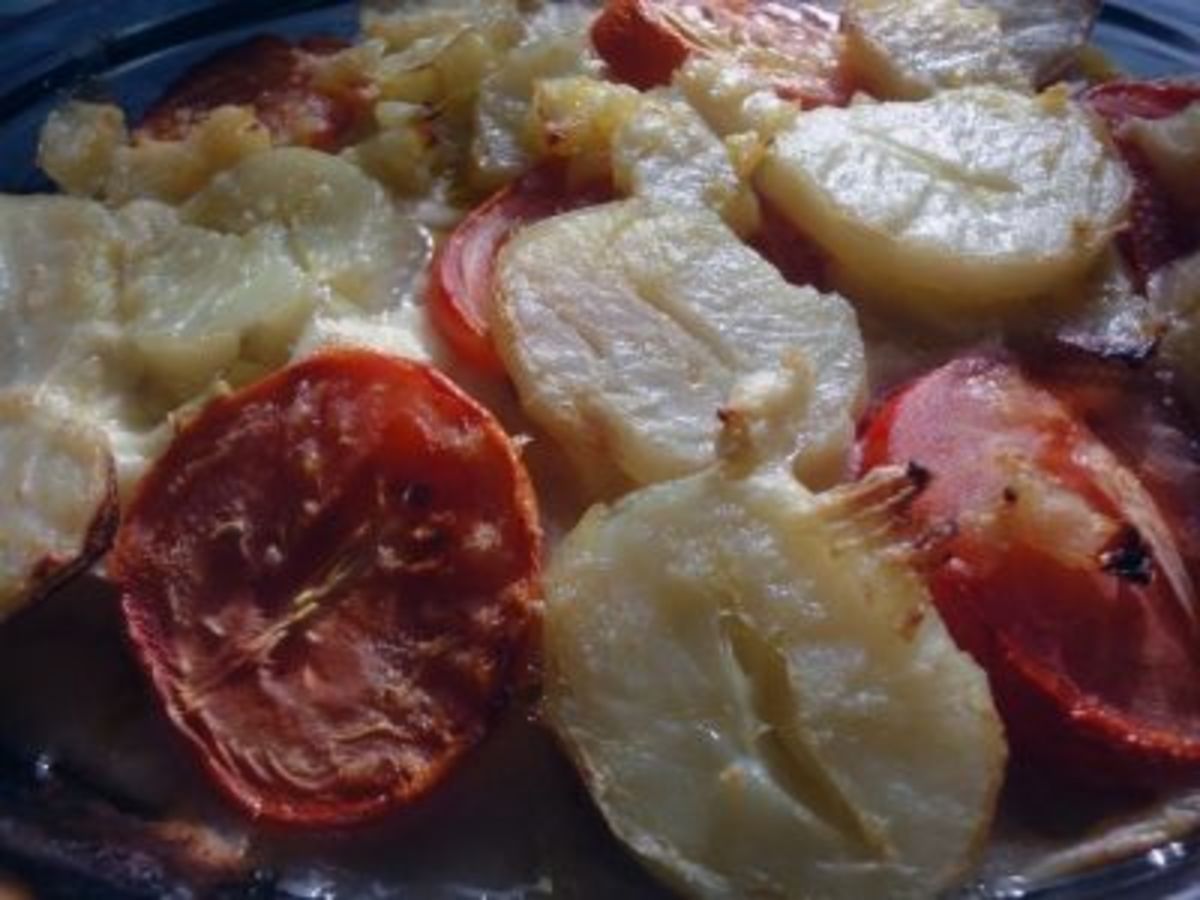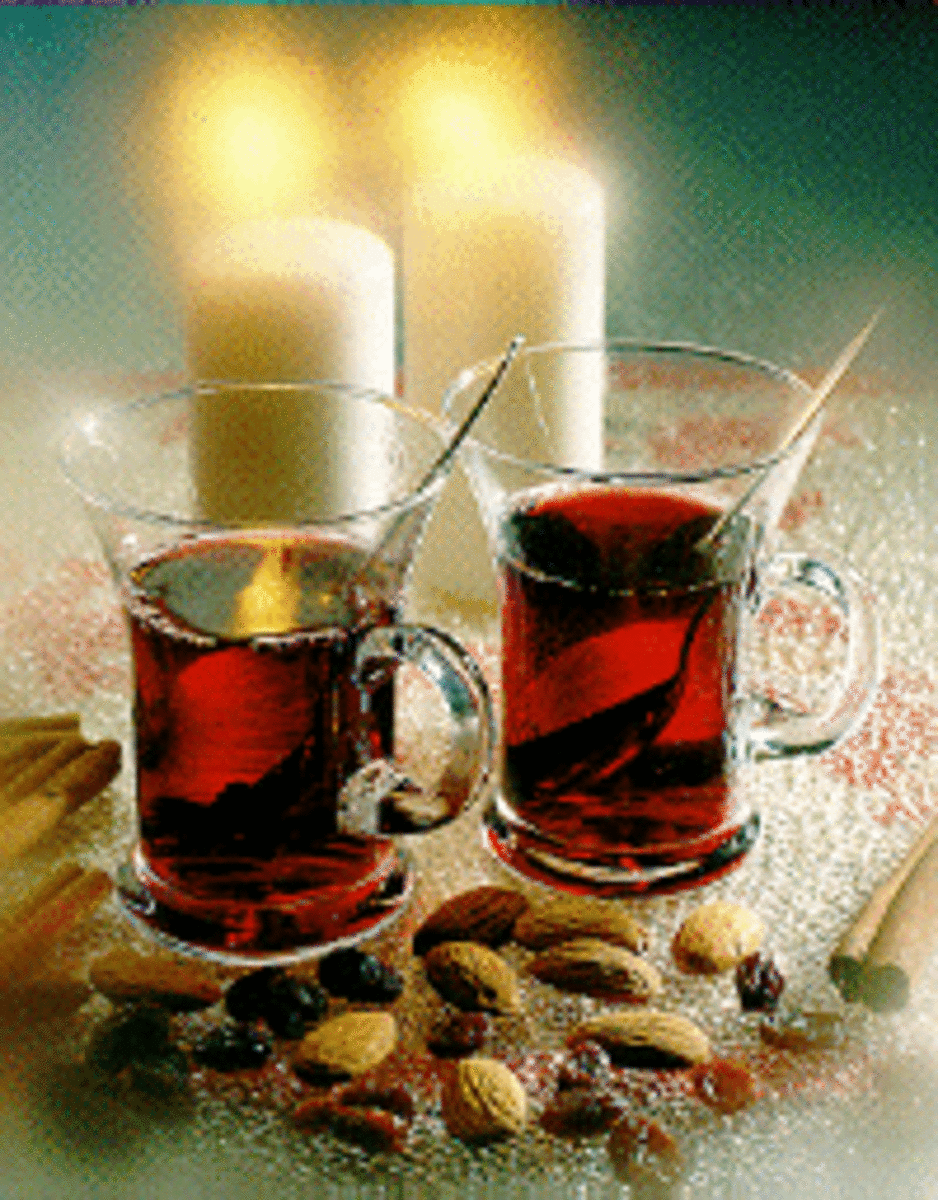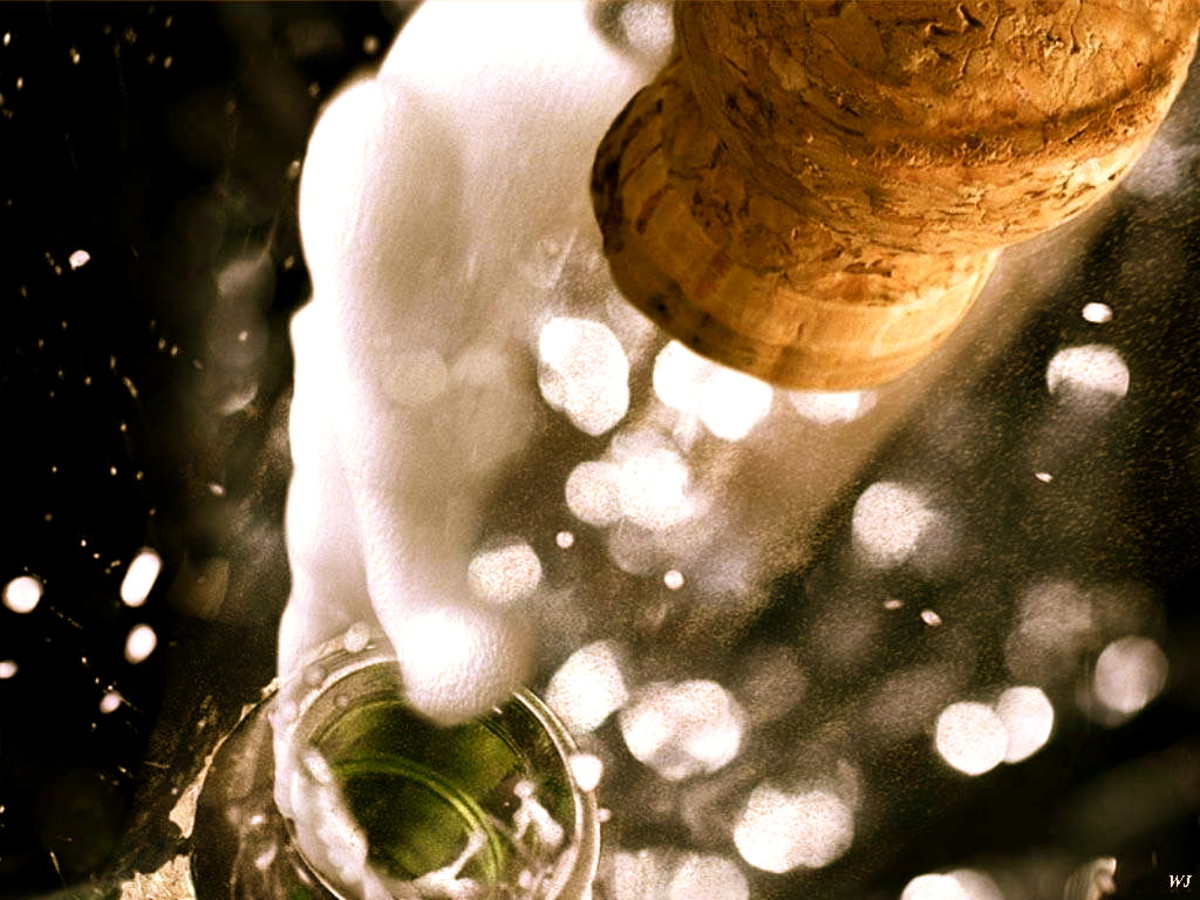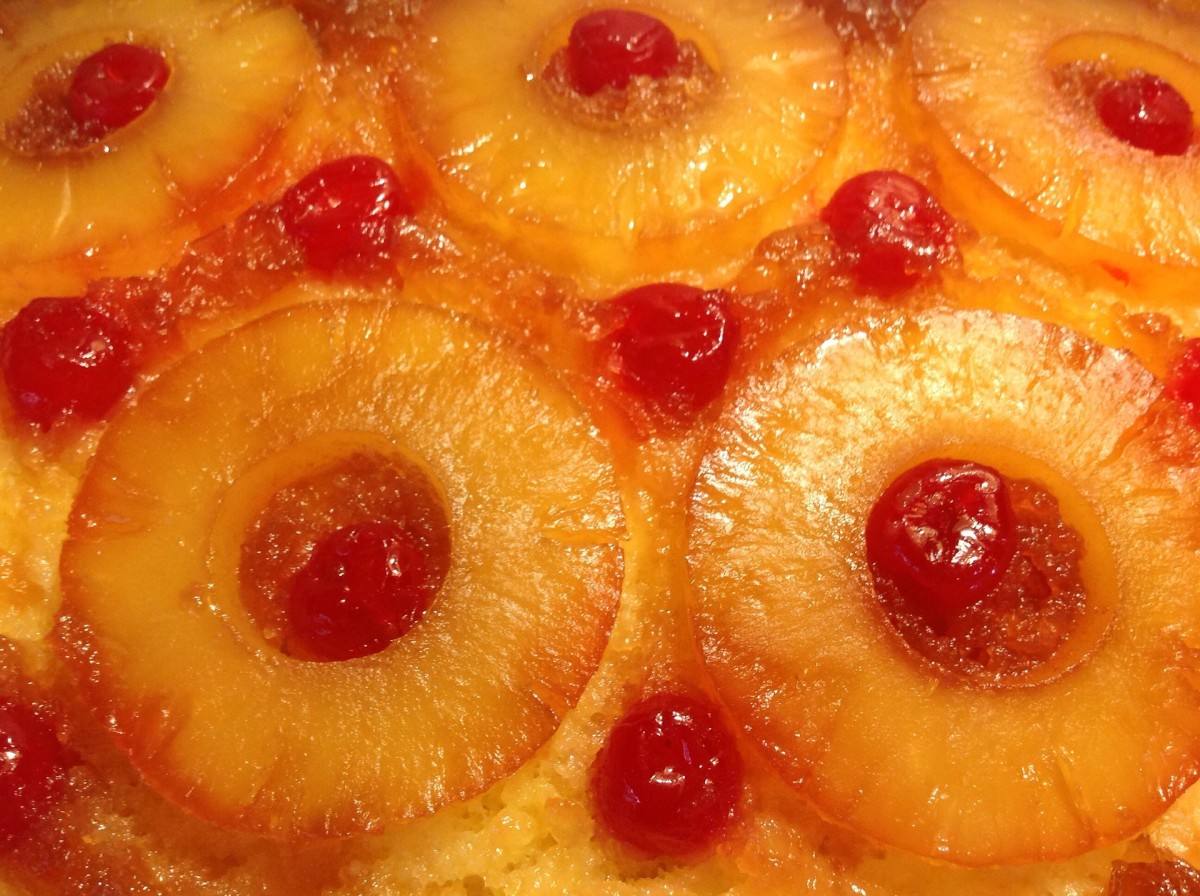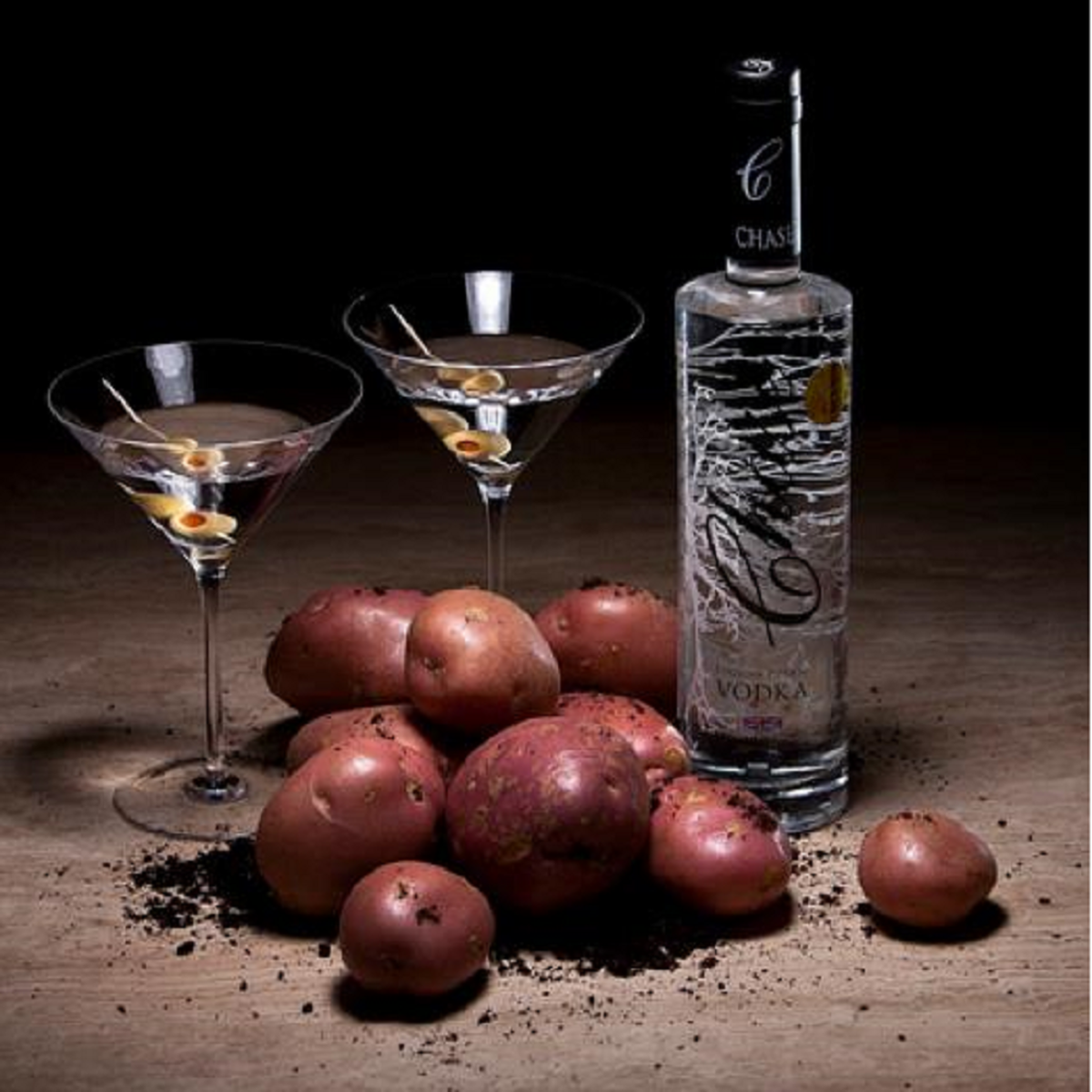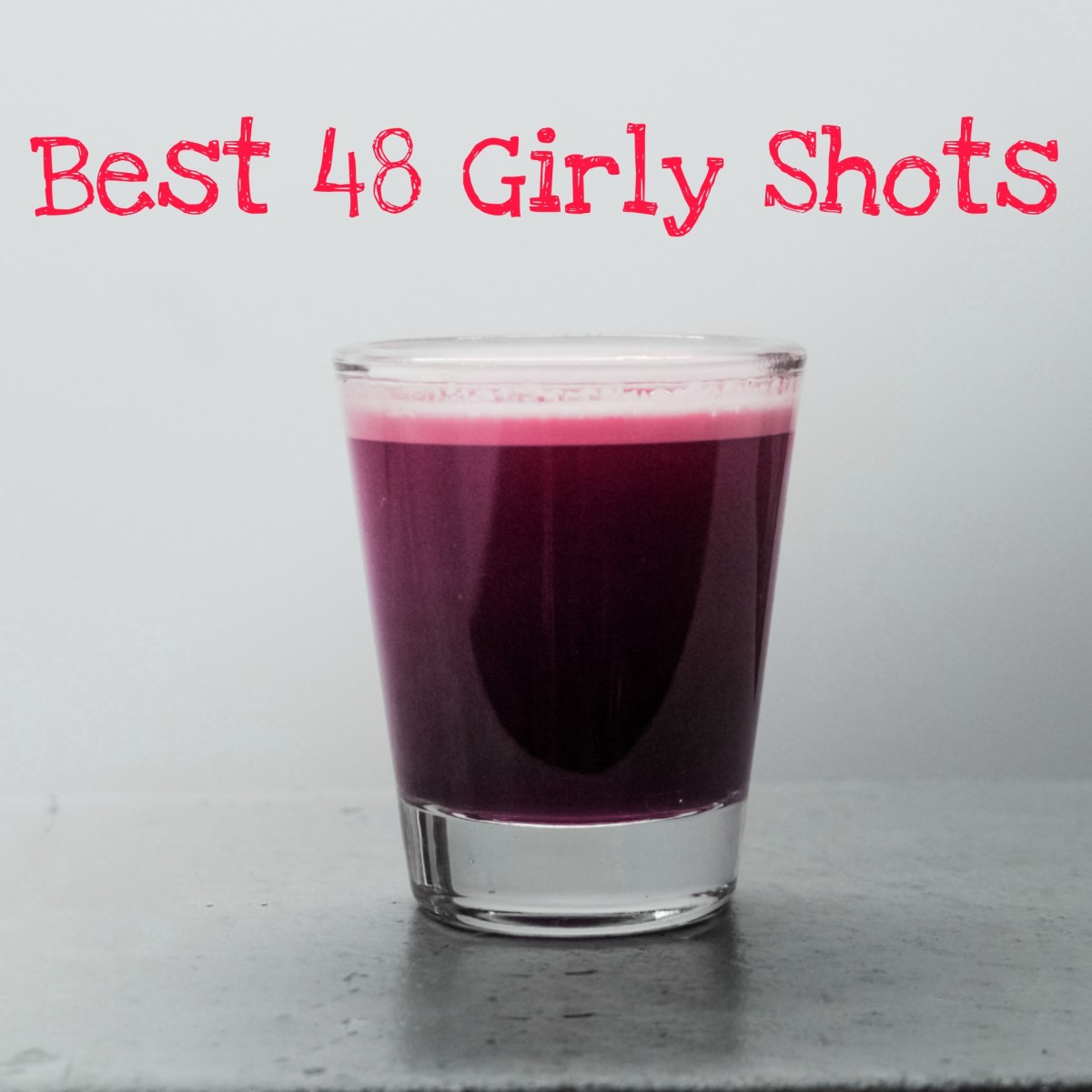Making Mulled Wine
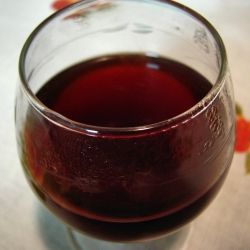
Add Mulled Wine to your Celebrations
Here's a little something for those who enjoy holiday cheer of the alcoholic variety, but also like to experiment and try new or different things. Rich in colour, flavour and aroma, this hot drink is a lovely addition to winter festivities!
What we now call mulled wine has been enjoyed since the days of ancient Rome, so it's hardly new. There are also many recipes available. Since my older daughter began her drink review blog, Thus Unquenched, we have been trying all sorts of beverages, including trying out new recipes.
This is the mulled wine we made as we waited to ring in the New Year of 2013. It is modified from another recipe from a great website I will link to. I hope you enjoy trying it out as much as we have!
The Original Recipe
from Serious Eats
I have enjoyed the site, Serious Eats, for quite a long time now, and they are the source of the original recipe, Mulled Spiked Wine from Lolinda. We were not, however, able to follow it exactly, so what you see below is our modifications of the original.
Serving Size
Serves: 8
Ingredients
- 2 lemons
- 2 cups water
- 12 whole cloves - more or less
- 4 whole star anise pods
- 4 cinnamon sticks
- 1/4 tsp grated nutmeg
- 1 inch piece of ginger root - peeled and sliced
- 1 bottle dry red wine - 750ml size
- 2 1/2 cups port
- 6 Tbsp brown sugar
Instructions
- Use a vegetable peeler or zester to remove the peel of one lemon, being careful not to include any of the white pith. Quarter the lemon and squeeze the juice from 2 pieces, which should give you about 3/4 oz juice. Set the remaining quarters aside for later. Cut second lemon up into quarters as well.
- Bring the water to simmer, then add the zest, whole cloves, star anise, cinnamon sticks, nutmeg and ginger. Simmer for 10 minutes.
- Add the wine, port, lemon pieces and brown sugar. Stir and return to simmer. Simmer mixture for another 10 minutes.
- Strain mulled wine, then keep warm until ready to serve.
The Ingredients - A word on our modifications
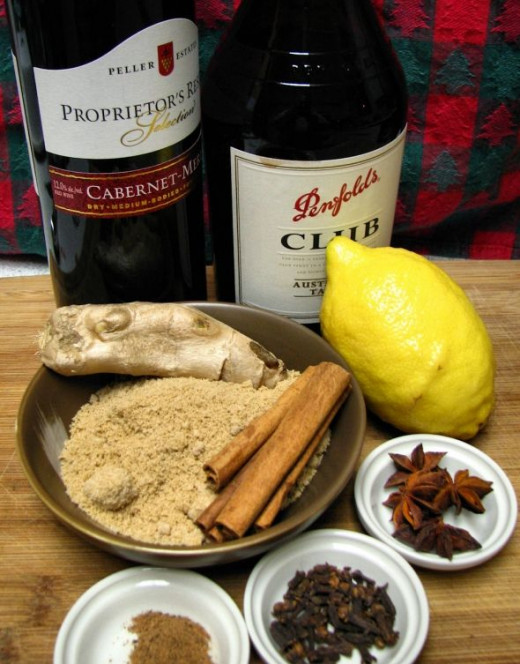
The original recipe called for orange, which I forgot about when I was shopping, but I did get an extra lemon, so I used that instead. We had no raw sugar, so I substituted brown. The original recipe also called for spiced rum, but after getting the wine and the port, it was outside of my budget.
I was sure the recipe called for ginger. When we saw that it didn't, I decided to use it anyhow. I had to go to a specialty store to find whole star anise. The recipe also called for fresh nutmeg, but for the amount we use in general, it just wasn't worth it to buy a whole bottle when I already had ground nutmeg at home.
As for the wine and port, I'm not much of a drinker, so I don't know my alcohols very well. On telling a friendly employee what I was looking for and why, she directed me to the least expensive of both! With so many additional flavours and spiced being added, it's not really the time to be buy high end.
Preparing the Lemon - Knife or Zester?
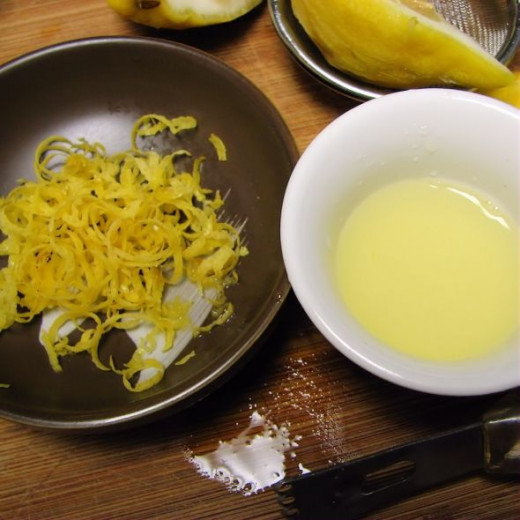
The original recipe said to use a vegetable peeler on the lemon, but I recently picked up a lovely zester, so I went with that, instead.
On quartering the lemon, I found it had a LOT of seeds in it, so I used a tiny sieve to keep them out of the juice. Very handy!
Ginger
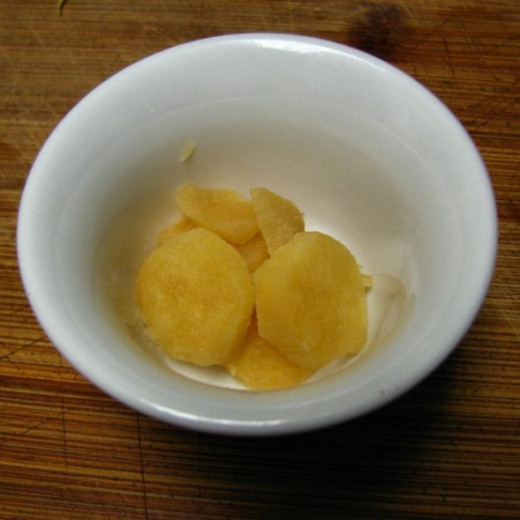
Though the original recipe I found did not use ginger, it is in other recipes for mulled wine I've seen over the years, so we decided to use it.
Making the Decoction
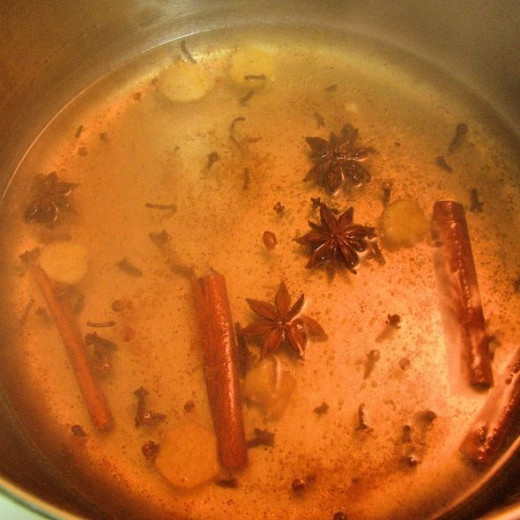
Though the original recipe says to infuse the spices in water, what we're actually doing here is called a decoction. An infusion is usually done with softer materials, such as leaves, non-woody stems and flowers, and is what you're doing when you steep your tea. Water is brought to a boil or simmer, then taken off the heat sorce. Ingredients are added and left for a short length of time before being strained out.
A decoction is done for harder materials - barks like the cinnamon, seeds like the anise, and roots. Though cloves are dried flower buds, they are heavy and hard enough for this method. Unlike steeping, the heated water is kept on the heat source, and the ingredients are simmered for a longer time.
In the above photo, the cloves (I didn't bother counting out a dozen, since I have very few left in my jar anyhow), cinnamon sticks, ginger and anise seed pods are added to the water once it starts simmering, then left to simmer for 10 minutes.
10 Minutes Later
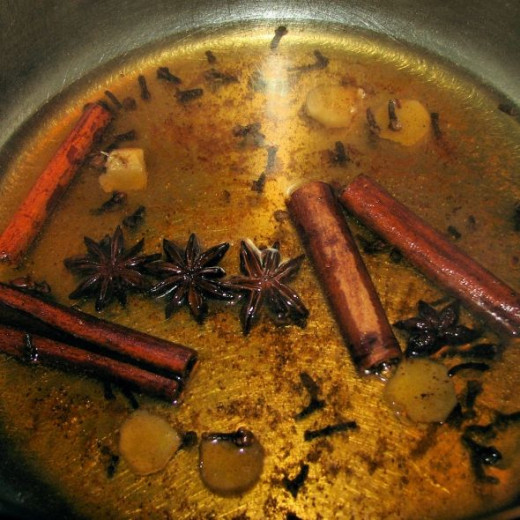
This is how the decoction looks after simmering for 10 minutes. In the process, the 2 cups of water has been reduced by about a quarter cup at this point, more or less.
Adding the Remaining Ingredients
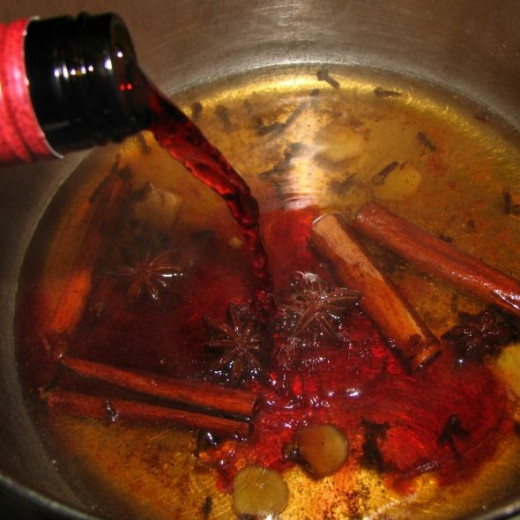
Once the spices have simmered, it's time to add the alcohol, sugar and lemon. Just dump the rest in and bring it back to a simmer. Leave to simmer for another 10 minutes.
The resulting mixture has some pretty intense colours and smells!
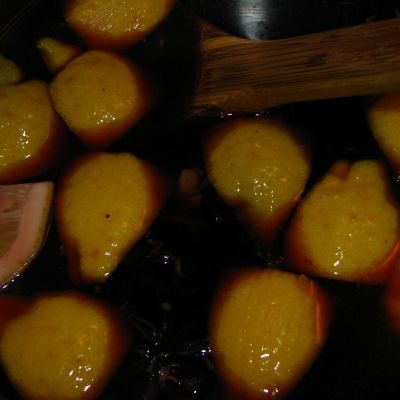
Straining the Mulled Wine
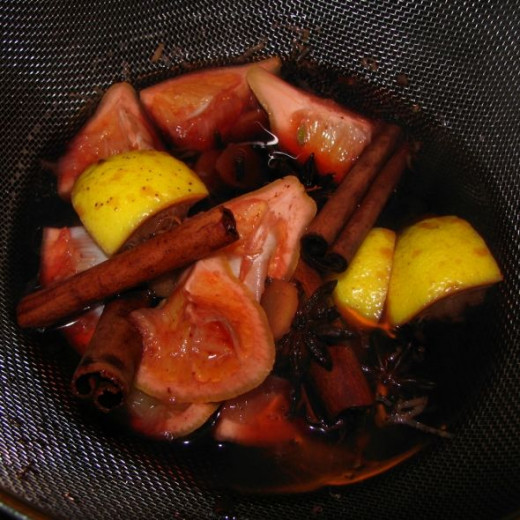
After another 10 minute simmer, it's time to strain everything out. I used a larger sieve that fit perfectly into another saucepan that I've got and just poured it all from one to the other.
Once the mulled wine has been strained, it can be served immediately, or kept warm for later.
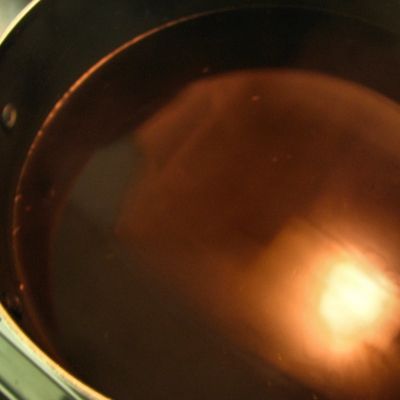
Ready to Serve
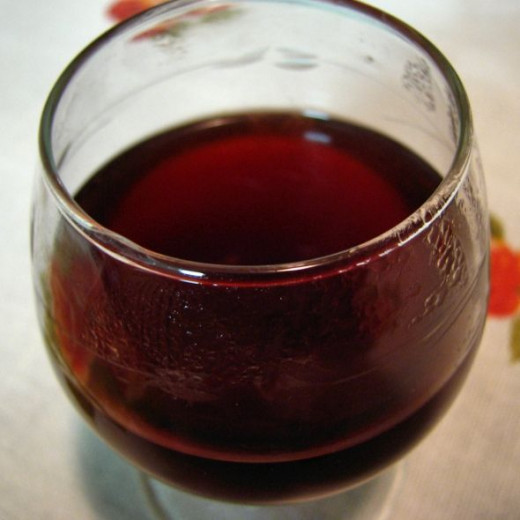
One thing about making mulled wine - even if you don't like alcohol, the smells of all those spices sure make the house smell wonderful!
So how did it turn out?
For that, you'll have to visit my daughter's blog, where she has written a flavourful review!



